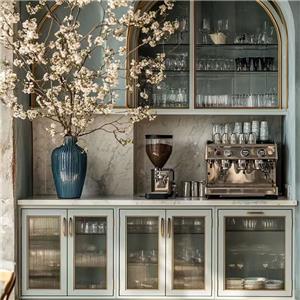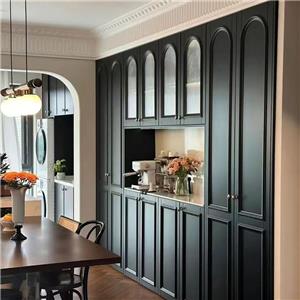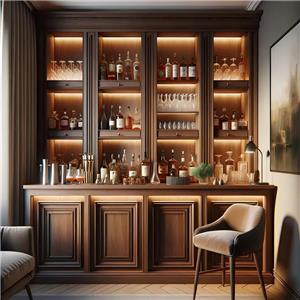What are the bookcases in a library called?
In the vast space of a library, books are the most important "residents", and the bookcases that carry these books are one of the core furniture in the library. Although "bookcase" is a common name, in libraries, bookcases are sometimes more than just simple book storage tools. They often have their own unique names and functions to meet the library's unique management needs and space planning.
So, what are the bookcases in a library called? What is the difference between them and ordinary home bookcases or office bookcases? What are their design characteristics? This article will explore in detail the names, functions, design features of library bookcases, and how they provide efficient storage and management solutions for libraries.
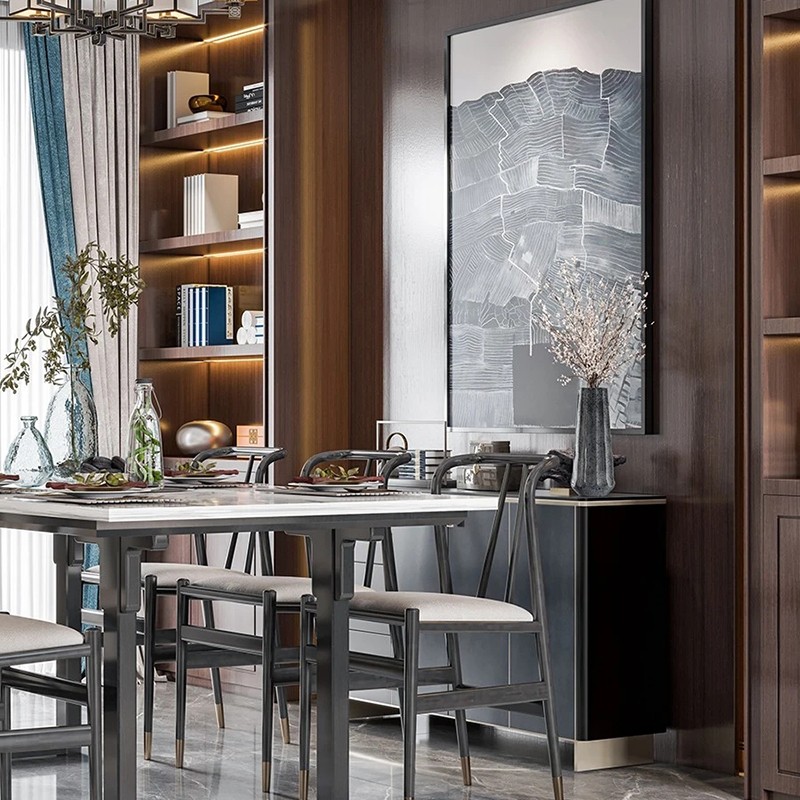
What are the bookcases in a library called?
Library bookcases are furniture used to store books, journals, magazines, newspapers and other materials. According to different functions and designs, they are usually called "Bookshelf", "Book Storage", "Book Cabinet". However, the use of these terms is often closely related to the specific design and purpose of the bookcase. Generally speaking, the naming of library bookcases depends on the type of books they carry, how they are stored, and how they are placed.
1. Bookshelf
Bookshelf is the most common form of bookcase in library. It is usually a row of vertical open shelves, which is convenient for displaying and accessing books. The height, width and depth of the bookshelf can be adjusted according to the actual needs of the library. In some public libraries and school libraries, bookshelves are usually open-designed, and books can be browsed and accessed directly on the bookshelf.
Bookshelves usually have no doors, and books can be seen directly, which is convenient for readers to browse according to classification. Moreover, their structural design is more simple and focuses on functionality. The function of library bookshelves is not only to store books, but also to classify and retrieve books. Therefore, in design, they may adopt systems such as labels and numbers to ensure that books are stored in order by subject, author or other means.
2. Book Storage
Compared with bookshelves, book storage is more used to store a large number of infrequently borrowed books or precious books. In some large libraries, a book storage usually refers to a relatively closed area with a large storage capacity, which is specially used to store books. The bookcases in the book storage are usually closed in design, and books can be borrowed and returned through the management system. The design of the library takes into account the maximum storage space, and may use electric or mechanical sliding systems to improve the efficiency of accessing books.
Some library may use "intensive storage" or "automatic access system", which helps managers find and retrieve books quickly through efficient mechanical systems. Therefore, the bookcases in the library are usually not as simple and clear as ordinary bookshelves, but focus more on the functions of efficient storage and retrieval.
3. Book Cabinet
The term "Book Cabinet" is often used in some smaller libraries or reference rooms, especially for areas where some books and magazines need to be stored. Book cabinets are usually more closed than bookshelves, and may have doors or drawers to store some precious books, reference materials or books that are not frequently borrowed. In some special cases, book cabinets may also be used to store periodicals, archives or other paper documents.
In the reading area of some libraries, book cabinets are also used to display specific thematic books, collections or common reference books for readers to use at any time. Compared with bookshelves, the design of book cabinets pays more attention to the protection of books, so their appearance is usually more rigorous and closed.
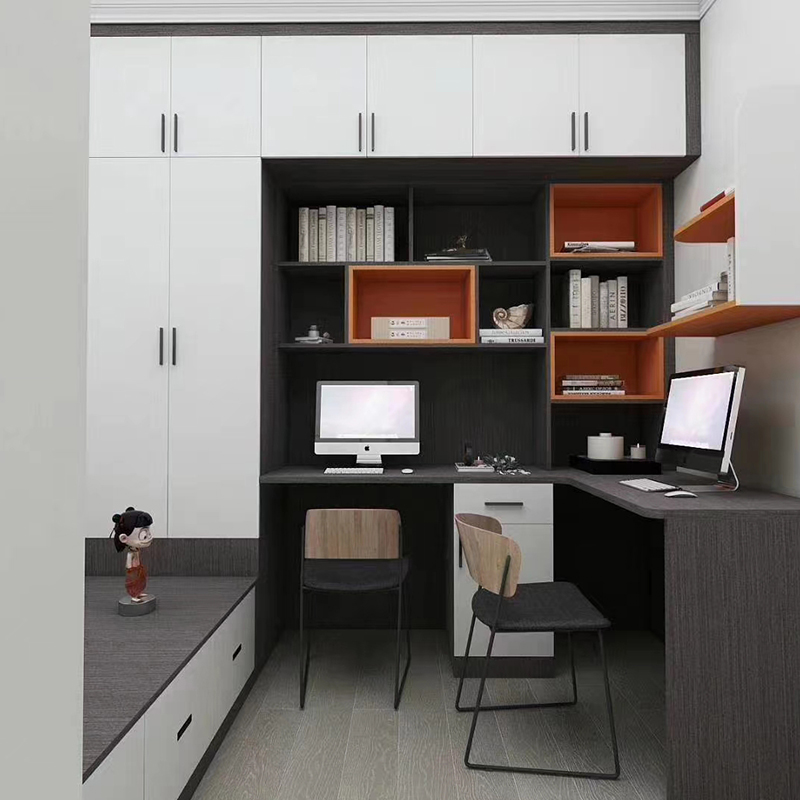
What are the design characteristics of library bookcases?
Library bookcases are very different in design from home bookcases because they must consider not only aesthetics and durability, but also space utilization, book classification, management system, and ease of use for readers. Here are a few design features of library bookcases.
1. Efficient space utilization
Library space is usually limited, so the design of bookcases must be able to maximize the use of vertical space. In order to accommodate a large number of books, many library bookcases are designed to be taller and more compact than home bookcases. For example, the height of the bookshelf can reach the ceiling, and it is even designed to be adjustable, which can be flexibly adjusted according to the size of different books. This design can not only accommodate more books, but also enhance the visual hierarchy of the space.
In order to facilitate the storage and access of books, some library bookcases are designed with movable or mechanized systems, allowing library staff to manage books more efficiently and save space.
2. Strong durability
Library bookcases usually carry a large number of books, so their materials must have strong durability. Most library bookcases are made of high-strength wood, steel or other metal materials, which can not only bear more weight but also prevent damage after long-term use. Especially in some historic libraries, the materials of bookcases are usually very strong to protect precious documents from damage.
3. Open and closed design
Bookcases with different functions have different design styles. Some library bookcases are open-designed, especially the bookshelves used in the reading area, so that readers can check the books they need at any time. Open-design bookcases are suitable for frequent borrowing and quick access, and they allow readers to browse and select books directly.
For bookcases and storage areas where infrequently borrowed or precious books are stored, closed designs are more common. These bookcases usually have doors or other closed structures that can effectively protect books from dust, moisture or light damage.
4. Adjustable bookshelf height
In some modern libraries, the design of bookcases pays more and more attention to flexibility. In order to meet the storage needs of books of different sizes, many bookshelves adopt adjustable shelf design. This design can easily adjust the height of each shelf as needed to accommodate books or documents of different sizes.
5. Integration of classification system
The library's bookcases are usually closely integrated with the library's classification system. The classification of books not only affects the design of the bookcase, but also determines the arrangement of books. Common classification systems such as the Dewey Decimal Classification or the Library of Congress Classification determine the order and management of books in the bookcase. Therefore, the design of library bookcases should not only focus on practicality, but also consider the operability of the classification system.

How to choose a suitable bookcase design?
The selection and design of library bookcases are determined by the library's space planning, functional requirements and budget. When choosing a bookcase, the library needs to consider the following aspects:
1. Space and layout
The design of library bookcases should first consider the efficiency of space use. If the space is limited, you can consider high-rise bookcases or movable bookshelves to maximize the use of space. If the space is large, you can choose a more spacious and complex bookcase for easy partition storage.
2. Book storage needs
Choose the appropriate type of bookcase according to the type and storage needs of different books. If you need to store a large number of periodicals, reference books, etc., closed bookcases may be more suitable because they can protect books from damage. If you are storing ordinary books, you can choose open bookshelves to facilitate readers to find them quickly.
3. Durability and protection
Library bookcases must be designed to be durable for long-term use. Therefore, the choice of materials is very important. Metal or heavy wooden bookcases can carry heavier books and perform better in protecting books from environmental impacts.
4. User convenience
Bookcases should be designed to focus on user convenience, including searching, accessing and returning books. Library bookcases are usually equipped with labeling, numbering or digitization systems to help readers quickly find the books they need.
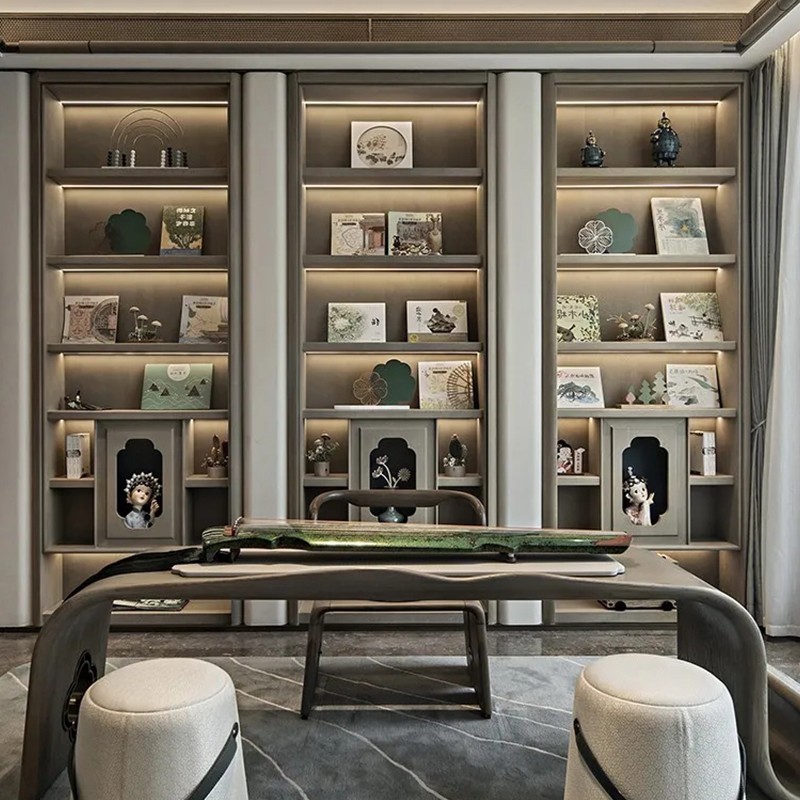
Gagaluna: Reliable Supplier for Custom Furniture
At Gagaluna, we combine quality craftsmanship with affordable pricing to deliver exceptional custom cabinets, bar furniture, and wall panels. Our Foshan-based factory uses premium materials like stainless steel and glass to ensure durability. Buyers can take advantage of factory discounts, tailored solutions, and professional service for their furniture needs.

